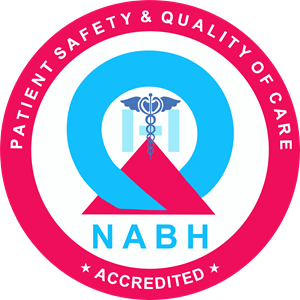What Are the Types of Cerebral Palsy?
Did you know that understanding the different types of cerebral palsy (CP) can help you take good care of your child and boost their independence and self-confidence?
You must understand that each type of CP brings unique challenges and symptoms. Knowledge about these differences helps you provide your child what they exactly need.
By learning about the types of cerebral palsy, you’ll be equipped to manage symptoms more effectively and provide the best care to them. This is the best way to ensure your child’s comfort and growth.


Key Takeaways
- Cerebral palsy affects movement, muscle tone, and posture.
- There are different types of cerebral palsy, each with different challenges.
- Understanding the type of CP helps provide better care for your child.
- Early intervention and the right therapies can improve mobility and independence.
- A combination therapy approach can give your child the best treatment outcome and independence.
Types of Cerebral Palsy based on Muscle Tone and Movement
Cerebral palsy is classified into different types based on how it affects a person’s muscle tone and movement. These classifications help you understand the unique challenges each type presents. It also helps you personalize your approach to take care of your child accordingly.
The most common type of CP is spastic CP. In other words, 80% of the CP patients are Spastic. The cause of this type of CP is damage to the motor cortex (a region of the brain that controls voluntary movement) or pyramidal tracts (a group of neurons that carry signals from the motor cortex to the spinal cord and brainstem), affecting voluntary movement.
Spastic CP impacts the muscles and makes them stiff, resulting in difficulty in walking. This is due to weakness in muscles.
The symptoms are found in the entire body or just one side of the body.
Causes of Spastic Cerebral Palsy
Spastic cerebral palsy can be caused by damage to the motor cortex and pyramidal tracts. Both of them are important for movement control. Here are the causes in detail:
- Motor cortex damage hampers the voluntary movement of a person. This makes it harder to control and causes stiffness (spasticity).
- Pyramidal tract damage disrupts communication between the brain and spinal cord which affects movement signals.
Symptoms of Spastic Cerebral Palsy
Here are the symptoms of this CP:
- Stiff muscles in one or more body parts
- Difficulty with fine motor skills
- Abnormal posture or gait patterns
- Awkward reflexes
- Difficulty with crawling or walking
- Muscle weakness in affected areas
- Permanently tightened muscles or joints (contractures)
- Exaggerated, jerky movements (spasticity)
People with this form of cerebral palsy usually have problems with balance, coordination, and motor functions. They can’t keep the objects in their hands and hence can’t write. Around 5% of cerebral palsy patients have ataxic CP.
Ataxic cerebral palsy happens when the cerebellum (it controls balance and coordination) is damaged. The cerebellum helps fine-tune movements, and when it’s injured, signals may be delayed or missed. This causes physical challenges.
Causes of Ataxic Cerebral Palsy
Ataxic cerebral palsy is caused by damage to the cerebellum which happens before, during, or soon after birth.
The cerebellum performs tasks like motor control, balance, coordination, posture, and muscle movement. It also translates signals from the motor cortex to the central nervous system for proper movement of the body.
Damage to the cerebellum can happen due to:
- Oxygen loss due to placental failure or breech birth.
- Infections during pregnancy.
- Brain bleeding caused by a fetal stroke.
- Head trauma during or after birth.
Symptoms of Ataxic Cerebral Palsy
These are some of the symptoms of ataxic CP:
- Shakiness and tremors.
- Poor coordination.
- Speech difficulties.
- Problems with depth perception.
- Spreading feet apart when walking.
Dyskinetic CP patients can’t control their body movements and have involuntary, abnormal movements in the arms, legs, and hands. In some cases, movements are jerky and in others the movements are slow. Around 15% of cerebral palsy patients have dyskinetic CP diagnosed with dyskinetic cerebral palsy
Patients cannot control the tongue and it comes out of the mouth involuntarily, resulting in difficulty swallowing and talking in a few cases.
Causes of Dyskinetic Cerebral Palsy
Dyskinetic cerebral palsy is a movement disorder caused by brain injury. The kind of effect this damage causes depends on which part of the brain is damaged.
- It can be caused by basal ganglia damage. The basal ganglia are located within the cerebral cortex. It coordinates voluntary movement and regulates motor function, thinking, and learning. Damage to it interrupts motor function development and leads to involuntary movements.
- Dyskinetic CP can be caused by cerebellum damage. The cerebellum controls coordination, precision, fine motor skills, and balance. Damage here can make these tasks difficult and may also impact cognitive functions like communication and attention. Additionally, cerebellum damage is linked to conditions like autism or epilepsy.
These brain damages to the cerebellum or basal ganglia can result from:
- Infections, such as meningitis.
- Trauma to the developing brain.
- Lack of oxygen during brain development.
Symptoms of Dyskinetic Cerebral Palsy
These are some symptoms of this CP:
- Floppiness in the limbs.
- Feeding difficulties.
- Stiff or rigid body.
- Posture problems.
In mixed cerebral palsy, a child shows symptoms of two or more types of cerebral palsy, such as spastic, dyskinetic, or ataxic CP. It can be caused by brain damage during fetal development, birth, or early childhood. Because of the damage their movement, balance, coordination, and posture are affected.
Symptoms of Mixed Cerebral Palsy
Here are some symptoms of mixed cerebral palsy:
- Difficulty walking or holding objects.
- Stiff or floppy muscles.
- Uncontrolled or jerky movements.
- Speech problems.
- Abnormalities in posture.
- Delayed growth and development.
- Shakiness.
There can be other symptoms like drooling, learning disabilities, seizures, and vision or hearing problems.
Types of Cerebral Palsy based on affected body parts
There are different types of cerebral palsy depending on the extent of brain damage and the involvement of limbs.
In monoplegic cerebral palsy movement in a single limb is affected. It can be an arm, leg, hand, or foot. The extent of disability depends on the size and location of the brain injury causing the condition.
People with monoplegic CP may experience different effects on their affected limb. It can be weakness, stiffness, shaking, or loss of sensation. It happens in various combinations. The issue lies in how the brain sends signals to the muscles, not to the muscles themselves, as the brain’s messages are disrupted.
Diplegia mostly affects two limbs of a person. Usually, the legs are affected in most cases. However, children may also experience mild movement challenges in their upper body. This type of CP is usually caused by premature birth.
Many people with this cerebral palsy can walk but they may have difficulty in doing so. They may need assistance with mobility devices.
Hemiplegic cerebral palsy affects one side of the person’s body which includes one arm and one leg. Some people with this CP can walk, while others may need a wheelchair or assistive devices. It is the most common form of CP that affects 33-39% of people with this condition.
When all four limbs are affected, it is called double hemiplegia. One side gets more affected than the other in this case.
Quadriplegia affects all four limbs of the CP patients. In this condition, the legs get more impacted than the arms. It can also affect trunk muscle tone and limit control of facial muscles. With uncontrollable facial muscles, it is difficult for the patient to eat and swallow.
Quadriplegia happens when a large portion of the brain gets damaged before or during the birth of a child.
In triplegia, three limbs of the patient are affected. It usually affects both legs and one arm. There will be stiffness and motor impairment in these limbs.
Treatment for Different Types of Cerebral Palsy
Cerebral palsy (CP) treatment focuses on managing symptoms, improving mobility, and boosting the independence of a person. The specific treatment depends on the type of CP and the severity of the condition.
Combination therapy is the most effective treatment approach for all cerebral palsy types, as it will bring together the best of all the treatment methods and therapies. It includes common therapies like physical and occupational therapy, along with advanced methods like stem cell therapy. It also uses the goodness of natural and holistic treatment approaches like Ayurveda and homeopathy.
Let us help you understand how it works wonderfully for each cerebral palsy type. For the treatment of spastic cerebral palsy combination therapy may bring together physical therapy, occupational therapy, speech therapy, stem cell therapy, Ayurvedic therapies, and homeopathic treatment. Physical therapy will look after muscle strength and flexibility, occupational therapy will improve their ability to perform daily activity, ayurvedic herbs and therapies will help them manage the symptoms and stem cell therapy will regenerate the damaged cells and tissues of the brain.
All these approaches and methods will give your child the best result. To make the process easier for you, MedicoExperts brings together specialists from all these fields under one roof. To know more about this treatment option check our blog on the same.
Takeaway
As a parent, you need to understand the type of cerebral palsy your child has. This knowledge can make a big difference in how you support and care for your child. More so, every type comes with its unique challenges. But knowing what they need helps you support them better. You can also help them become more independent and build their confidence.
With combination therapy, you get the best of modern treatments and natural approaches, all in one place. This therapy improves mobility, boosts independence, and manages symptoms, as it is designed to give your child the care they deserve.

Frequently Asked Questions (FAQs):
Q1. How is the type of cerebral palsy determined?
A. Doctors diagnose the type of CP based on a child’s symptoms, physical examination, and medical history. Imaging tests like MRI or CT scans may also be used to assess brain damage and confirm the diagnosis.
Q2. Can cerebral palsy types overlap?
A. Yes, some children are diagnosed with Mixed CP, which means they exhibit symptoms of two or more types. For example, a child may have both stiff muscles that happen in spastic CP and coordination issues that occur in ataxic CP.
Q3. Which type of cerebral palsy is the most common?
A. Spastic CP is the most common type of this condition. It affects about 80% of individuals with cerebral palsy. It primarily causes muscle stiffness and difficulty with movement.
Q4. What is adult cerebral palsy?
A. When children with cerebral palsy grow as adults, they face many challenges of this condition. These challenges may include more pronounced developmental delays, or mental health conditions. On the other hand, they may achieve developmental goals like walking for the first time after reaching adulthood.
- https://www.ninds.nih.gov/health-information/disorders/cerebral-palsy
- https://www.sciencedirect.com/science/article/abs/pii/S1090379821001987
- https://www.ncbi.nlm.nih.gov/pmc/articles/PMC9356840/
- https://www.ncbi.nlm.nih.gov/pmc/articles/PMC9356840/
- https://www.ninds.nih.gov/health-information/disorders/cerebral-palsy
- https://www.ncbi.nlm.nih.gov/pmc/articles/PMC9356840/
Next in Cerebral Palsy

Author Bio:
Dr. Khushbu Jain is a dedicated professional with a passion for advancing healthcare through cutting-edge treatments. She has a special interest in researching regenerative medicine and advanced treatment for diseases that are difficult to treat with conventional treatment options. Her deep understanding of these progressive treatments allows her to offer patients personalized and effective solutions for a variety of health concerns.
Content Medically Reviewed By MedicoExperts Editorial & Clinically Review Board



